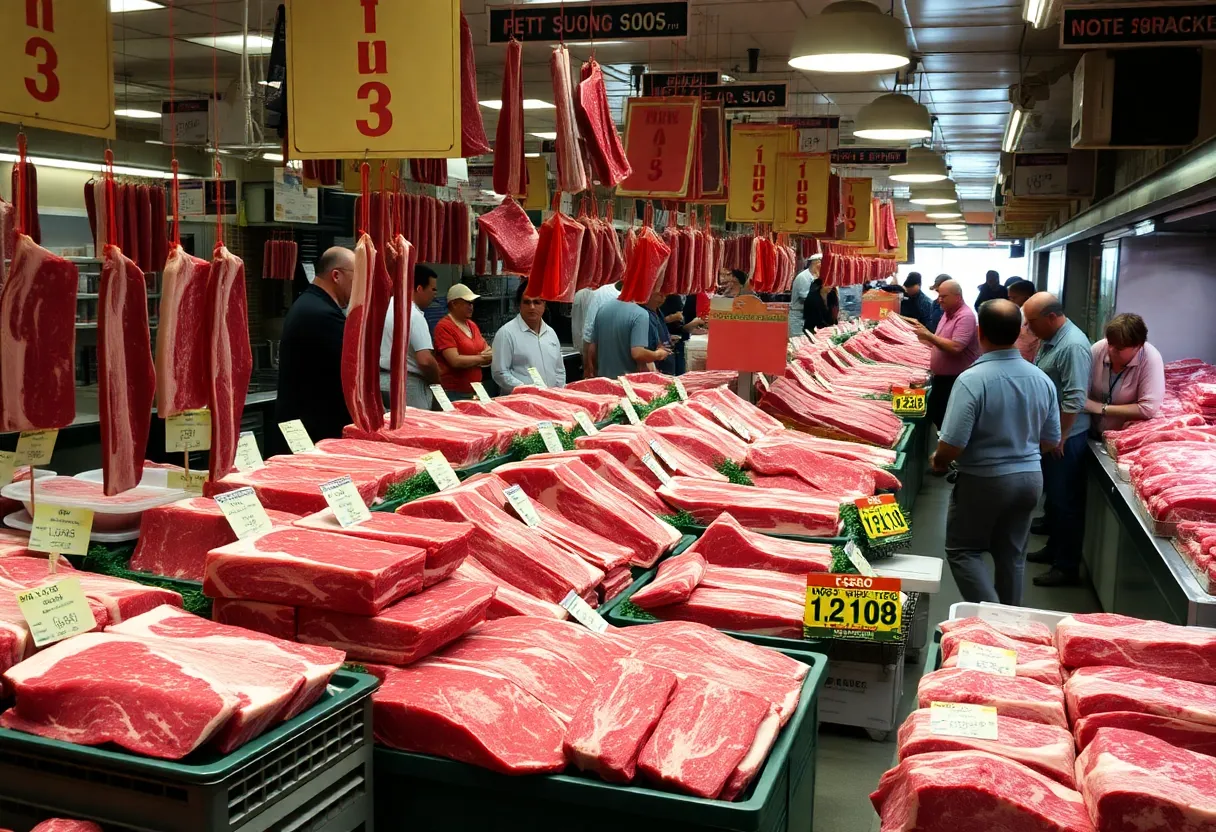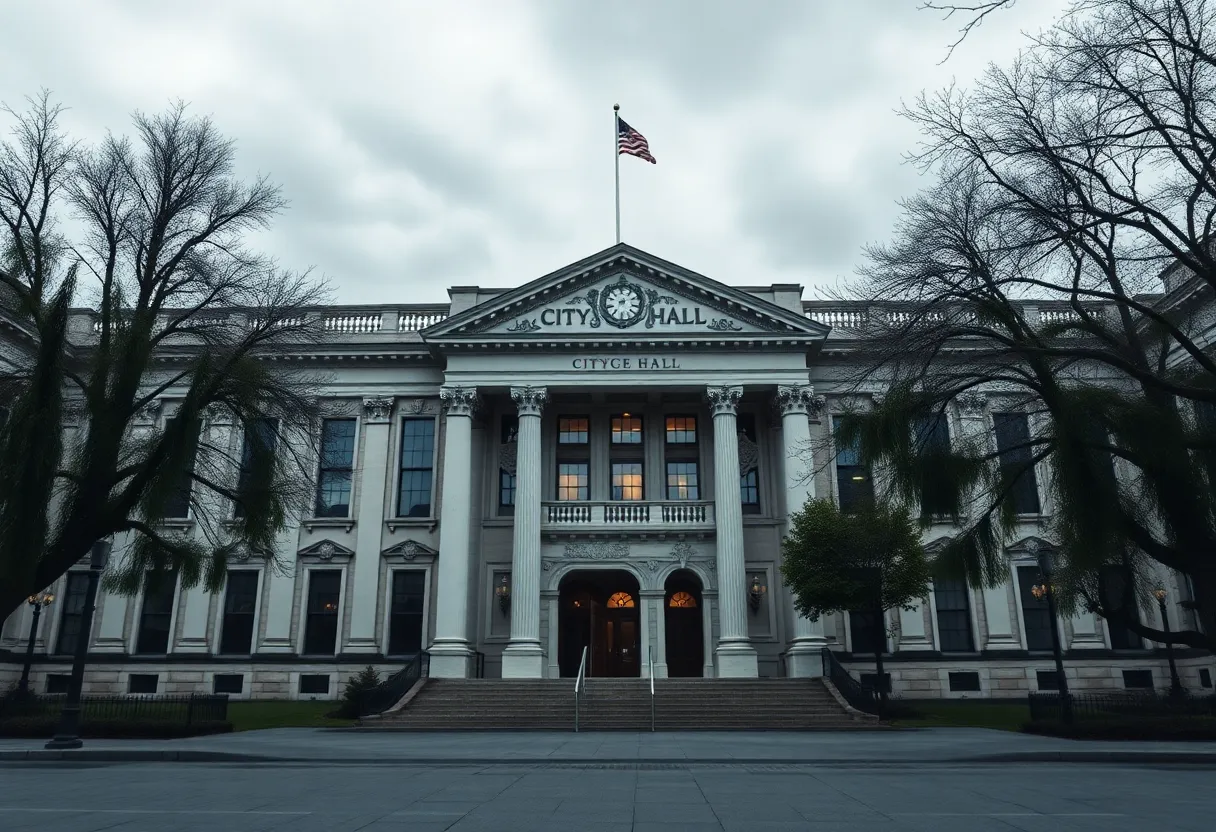News Summary
California is witnessing a significant rise in beef prices due to shrinking cattle herds and increased consumer demand. The average price for ground beef has surged to $6.12 per pound, while steak prices also see a notable rise. Ranchers benefit from higher selling prices, yet vendors struggle with low inventory and rising operational costs. As consumers turn to alternatives amidst these challenges, the beef market remains unstable, with prospects of tariffs and external factors affecting supply in the near future.
California is currently experiencing a significant increase in beef prices, primarily driven by a combination of shrinking cattle herds and heightened consumer demand. Over the past year, the prices of beef and steak have steadily risen, affecting both ranchers and vendors across the state.
Ranchers have been able to sell beef at higher prices, resulting in favorable profit margins due to the increased selling prices. However, Northern California vendors are struggling to maintain adequate inventory levels to meet the rising demand. The Mad Butcher Meat Co. reports that while they receive daily shipments, these do not always satisfy their complete orders, indicating a supply chain issue that has led to historically low inventory levels.
As of June, the average price for a pound of ground beef reached $6.12, reflecting a 12% increase from the previous year, while uncooked beef steak prices increased by 8%, averaging $11.49 per pound. This rise in pricing is attributed to various factors, including a drastic decline in the U.S. cattle herd, which is now at its lowest level since 1951. Supply constraints are further exacerbated by drought conditions that have affected feed availability and high slaughter rates of female cattle, which are crucial for herd expansion.
In addition to rising prices, sales trends indicate that ground beef has seen a 12% increase in sales compared to last year. In light of the high beef prices, consumers are shifting their purchasing habits, opting for alternatives such as pork, chicken, and turkey products. The rising cost of beef organs such as liver and hearts has also caught consumer attention, as prices for these items have risen to levels comparable with ground beef and steak.
Vendors like Mad Butcher are faced with the challenge of stabilizing prices amidst unpredictable operating costs and dwindling beef availability. As a practical response, they are adjusting their prices weekly to reflect these fluctuating costs. Ranchers, on the other hand, note that while they are facing higher costs of operation, the selling price of cattle has compensated for these increases, resulting in higher profit margins than previously seen.
Despite the current challenges in beef supply, consumer demand continues to remain strong, especially as grilling season approaches. However, as the market remains unstable, the prices are likely to stay elevated. The effects of external factors, such as the recent emergence of the New World screwworm fly in Mexico, have also contributed to difficulties in cattle imports, tightening supplies further.
While there are prospects for improvement in the herd size as drought conditions improve and grain prices decline, the process of expanding cattle numbers will take time. Additionally, the potential implementation of tariffs on imported beef may further drive prices upward, adding to the burdens on meatpackers and consumers alike.
All indicators suggest a complex interplay between demand and supply that will define the beef market in California and beyond in the coming months. Stakeholders are urged to monitor these trends closely as the summer unfolds.
Deeper Dive: News & Info About This Topic
- KCRA: Rising Beef Prices in California
- Wikipedia: Beef
- NerdWallet: Why is Beef So Expensive
- Google Search: Beef Prices Trends
- NBC DFW: Beef Prices Have Soared
- Google Scholar: Beef Prices
- Fresno Bee: Local Beef Price Insights
- Encyclopedia Britannica: Cattle
- Daily Journal: Beef and Bioreactors
- Google News: California Beef Prices

Author: Anaheim Staff Writer
The Anaheim Staff Writer represents the experienced team at HEREAnaheim.com, your go-to source for actionable local news and information in Anaheim, Orange County, and beyond. Specializing in "news you can use," we cover essential topics like product reviews for personal and business needs, local business directories, politics, real estate trends, neighborhood insights, and state news affecting the area—with deep expertise drawn from years of dedicated reporting and strong community input, including local press releases and business updates. We deliver top reporting on high-value events such as major conventions at the Anaheim Convention Center, including NAMM and VidCon, exciting games at Angel Stadium and Honda Center, and developments at Disneyland Resort Our coverage extends to key organizations like the Anaheim Chamber of Commerce and Visit Anaheim, plus leading businesses in hospitality, entertainment, and innovation that power the local economy As part of the broader HERE network, including HERECostaMesa.com, HEREHuntingtonBeach.com, HERESantaAna.com, and HERELosAngeles.com, we provide comprehensive, credible insights into Southern California's dynamic landscape.




